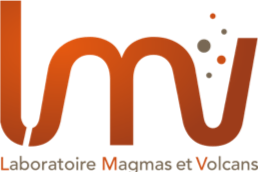Séminaire du LMV – 27 janvier 2015 à 14h00 en salle JJ
Multiphysical modeling of volcanic systems: Magma supply, storage, and volatile content at Kīlauea and Mount St. Helens
Researchers have made great progress understanding volcanic systems by interpreting data using remarkably simple models. For instance, geodetic data is typically inverted using kinematic models of volume changes in elastic media; this technique yields important constraint on the locations of magma reservoirs, but these simple models cannot directly shed light on properties of magma in the system, even when additional observations such as gas emissions, lava effusion rate, and gravity changes are available. At the other extreme, very sophisticated models of volcanic eruptions are available, but are typically poorly constrained by data because they directly predict few observations. In this talk I will discuss the development of multiphysical (physics-based) models of volcanic eruptions which can directly link magmatic processes with diverse, time-varying observations including ground deformation, lava effusion rate, and gas emissions. When used in a Bayesian inverse procedure, such models make it possible to simultaneously bring all available information (including independent observations from petrology and other disciplines) to bear on estimating properties of the volcanic system, as well as forecasting future behavior. We have used this approach to place constraints on the magma supply rate, primary melt volatile content, and the total volume of the magma reservoir at Mount St. Helens, Washington, during the 2004-2008 eruption, and the magma supply and storage rates, volume of shallow magma storage, and volatile content of the magma at Kilauea Volcano, Hawaii. Future work will include using models of this type to probabilistically forecast the evolution of an ongoing eruption.


